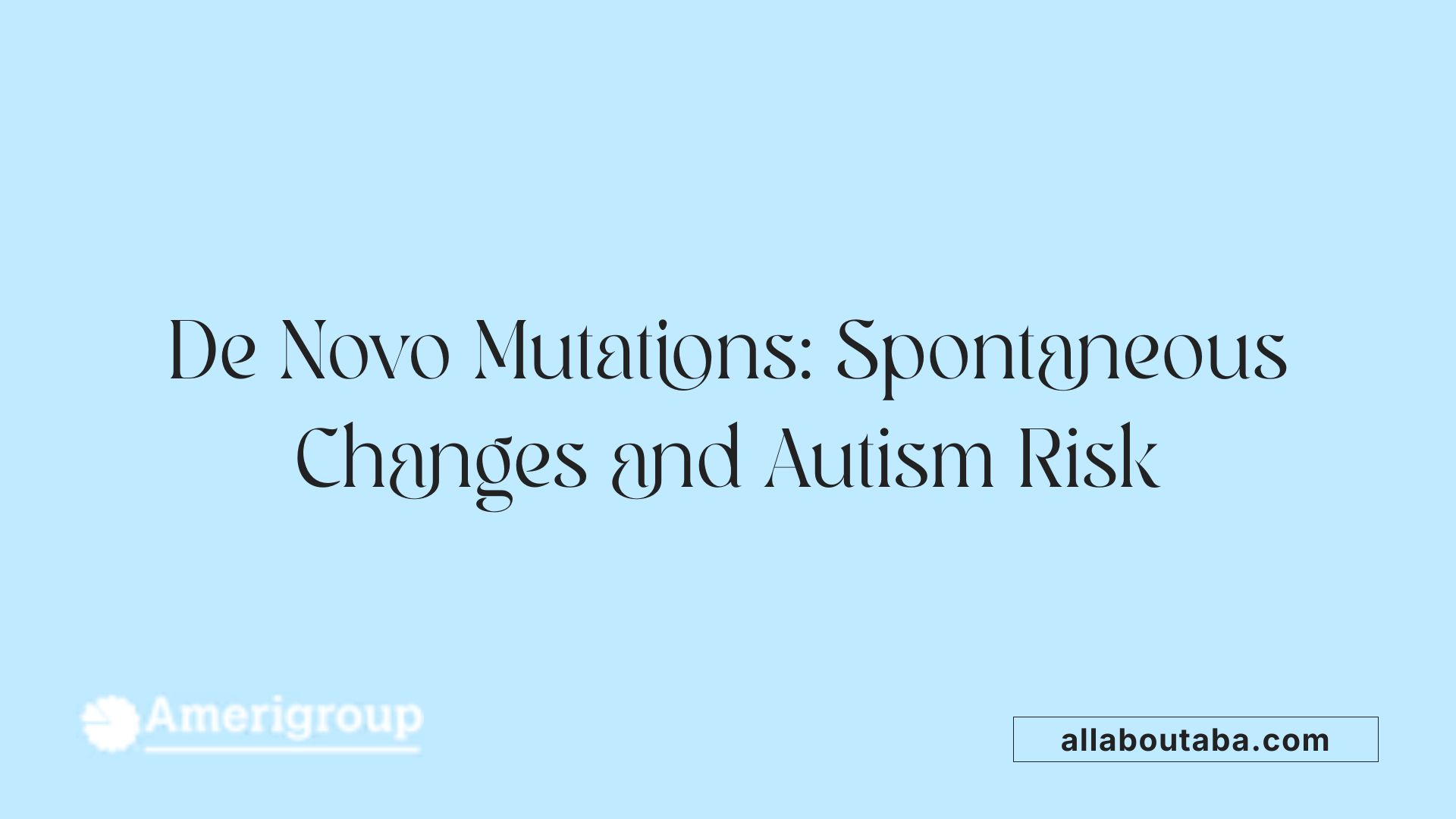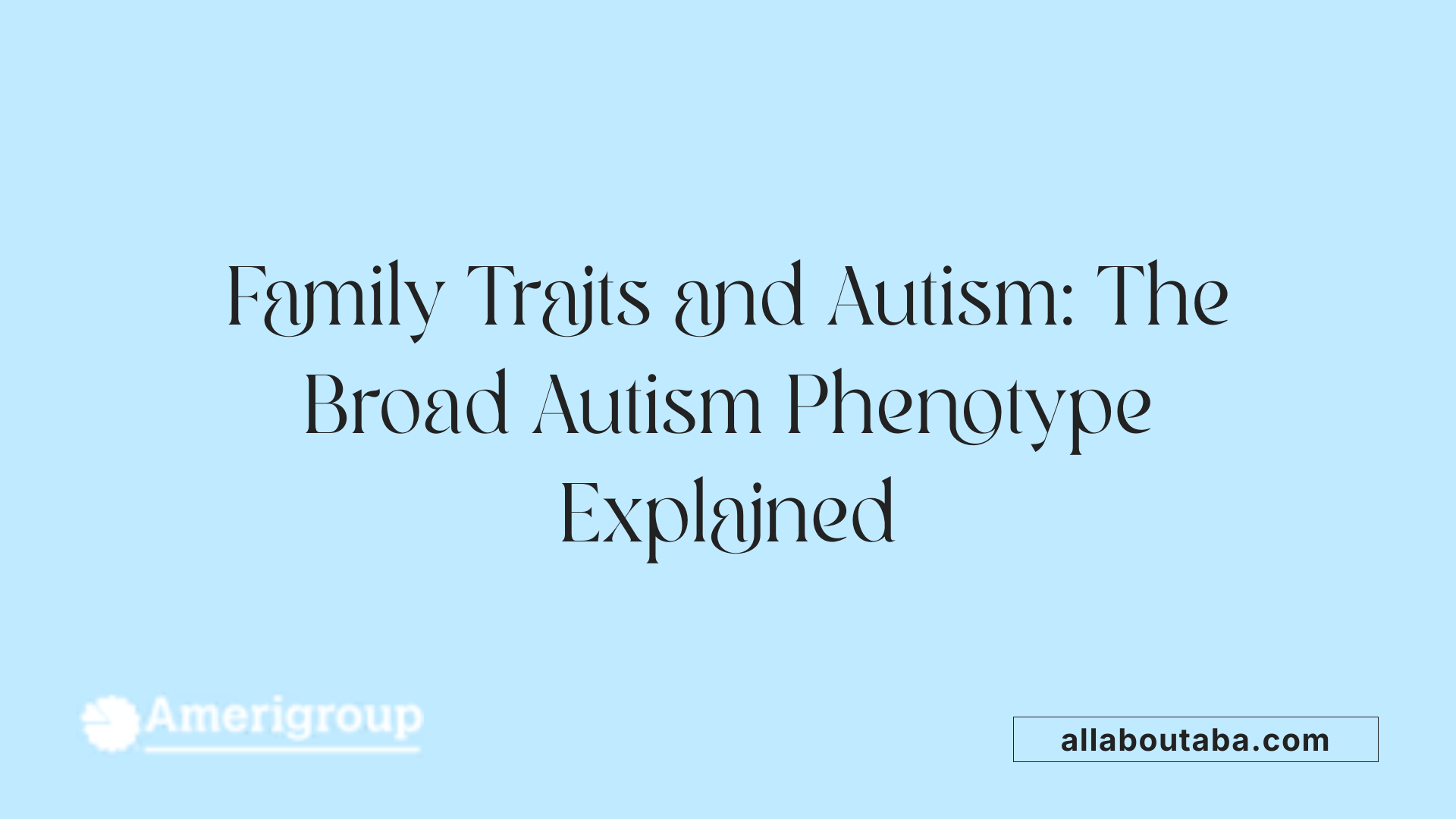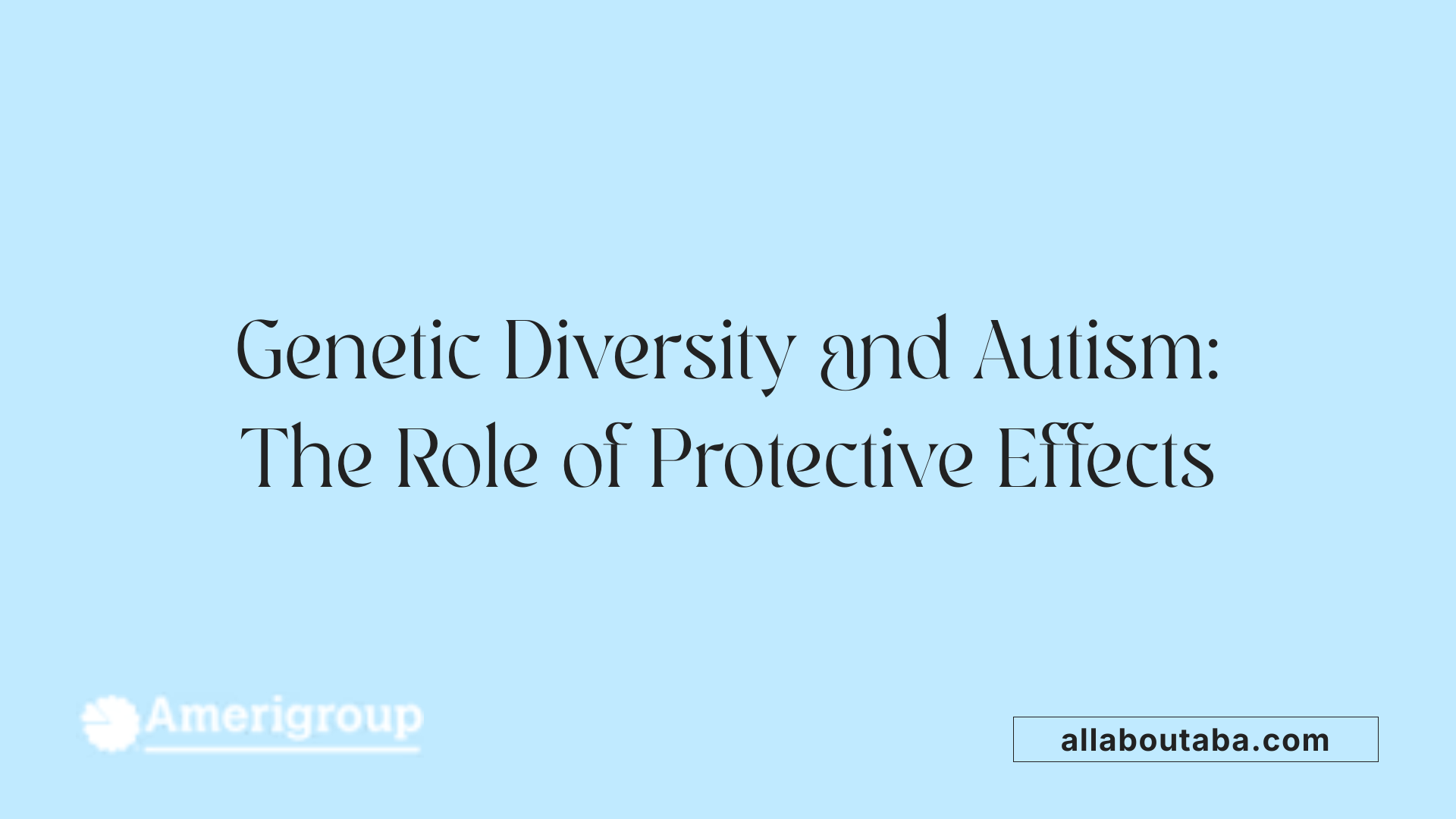Understanding the Parent’s Role in Autism Inheritance
Autism Spectrum Disorder (ASD) is a complex neurodevelopmental condition influenced by an intricate interplay of genetic and environmental factors. A core question in autism research revolves around the genetic inheritance pattern—specifically, which parent is more likely to pass on the autism gene and how these genetic factors contribute to the disorder. Recent scientific insights involve exploring the roles of paternal and maternal genetics, spontaneous mutations, and the presence of shared traits among families affected by autism.
Genetic Foundations of Autism
Is autism hereditary or genetic?
Autism is primarily a heritable and genetic condition, supported by extensive research indicating a strong genetic component. It involves the influence of multiple genes—currently more than 70 have been linked to autism. These genes can be inherited from parents or may arise through spontaneous mutations known as de novo mutations. While genetics significantly contribute to the risk, environmental factors and early brain development also play crucial roles.
Interestingly, most children diagnosed with autism are born to parents without the disorder, which highlights its complex inheritance pattern. This suggests that autism results from a mixture of genetic influences and environmental factors affecting brain development, rather than being caused by a single gene or factor.
What percentage of autism is genetic?
Research estimates that between 50% and 80% of autism risk can be attributed to genetics. Some studies have even suggested heritability estimates as high as 83%, with certain figures approaching 90%. This indicates that genetics are the dominant factor in autism development.
Over 200 genes have been associated with autism susceptibility, and many of these involve inherited variations that elevate the risk. However, environmental influences—such as prenatal exposure to toxins or parental age—also contribute, accounting for roughly 17% to 62% of the risk depending on the study.
In summary, while environmental factors cannot be discounted, the majority of autism cases are driven by genetic factors. The interaction between multiple genes and environmental influences makes autism a complex condition rooted in both inheritable traits and external exposures.
| Aspect | Details | Additional Notes |
|---|---|---|
| Heritability | 50-80% (up to 90%) | High genetic influence, risk shared in families |
| Number of Genes | Over 70 identified | Multiple genes interact, contributing to risk |
| Spontaneous Mutations | De novo mutations | New mutations can cause autism, especially in fathers of older age |
| Environmental Factors | Prenatal toxins, parental age, birth complications | Contribute alongside genetic predisposition |
| Family History | Increased risk in families | Autism can run in families, but most cases are idiopathic |
This complex interplay underscores the importance of both genetics and environment in understanding autism's roots, with ongoing research aimed at unraveling these interactions for better diagnosis and intervention.
Inheritance Patterns: Mother vs. Father
Is autism inherited from the mother or father?
Autism spectrum disorder (ASD) is influenced by a complex combination of genetic and environmental factors. Genetic contributions are notably significant, with heritability estimates ranging from 40% to 80%. Both parents carry genetic variants that can increase the risk of autism, and these can be passed on even if the parent does not have autism themselves.
Research over the years has shown that genes linked to autism come from both sides of the family. However, recent scientific studies indicate a stronger genetic influence from the father. This includes the transmission of multiple autism-related genes and the occurrence of spontaneous mutations—especially de novo mutations—that often originate in the father, with the likelihood increasing as paternal age advances.
Which parent is more likely to carry or pass on the autism gene?
While both parents can pass on autism-related genetic variations, compelling evidence suggests a paternal bias. Scientists analyzing thousands of families affected by autism have discovered that affected siblings tend to share a larger portion of their genome from their father than from their mother.
Research involving genomic analysis indicates that men are more frequent carriers of mutations associated with autism. These mutations can be spontaneous, or de novo, and are more common in older fathers. In families with multiple affected children, a higher share of genetic material is inherited from the father, highlighting a significant paternal contribution.
Polygenic inheritance and common variants
Autism is often not caused by a single gene but involves many genes working together. More than 70 genes have been linked to ASD, with many common variants playing a role. These variants are inherited in a polygenic manner, meaning each contributes a small increase in risk that accumulates over numerous genes.
Women with mild traits of autism spectrum, such as subtle language difficulties, tend to carry some of these common variants. These could pass to their children, increasing the likelihood of ASD. This broad spectrum of genetic influence underscores the importance of considering both rare mutations and common variants in understanding autism's inheritance.
X-linked versus autosomal contributions
Some genetic factors involved in autism are located on the X chromosome. Because females have two X chromosomes, these X-linked variants can be buffered, contributing to the 'female protective effect'—a phenomenon where females are less frequently affected than males. It is thought that high mutation loads or damaging variants on the X chromosome can increase risk, especially in males who have only one X chromosome.
Autosomal genes, on the other hand, are inherited equally from both parents and are responsible for many of the genetic contributions to autism. The combination of both X-linked and autosomal genetic variations makes autism inheritance complex.
| Inheritance Aspect | Parent of Origin | Effect | Additional Details |
|---|---|---|---|
| Genetic contribution | Both | Significant | Both parents transmit genetic variants; the impact from the father may be higher due to de novo mutations |
| De novo mutations | Father | More common | Increase with paternal age, especially older fathers |
| Autism heritability | Both | High | Estimated between 40% and 80%, with paternal influence notably strong |
| Autism traits in parents | Mother | Subtle traits | Language difficulties and broader autism phenotype traits more often observed in mothers |
| X-linked genetic factors | Mother | Protective | Females carry X-linked mutations but often do not manifest ASD due to protective effect |
Understanding the complex dynamics of inheritance in autism involves considering multiple genetic factors from both parents, with accumulating evidence pointing to a particularly influential role from the paternal side. This knowledge is essential for genetic counseling and studying the mechanisms behind ASD.
The Role of Paternal Age and De Novo Mutations

How does paternal age influence autism risk?
Research shows that older fathers are more likely to transmit genetic mutations that can increase their children’s chances of developing autism. As men age, their reproductive cells, or sperm, are exposed to more opportunities for genetic errors to occur. These spontaneous mutations, known as de novo mutations, are new genetic changes not inherited from the mother or father.
Studies indicate that the likelihood of having a child with autism rises with paternal age. Children born to fathers over the age of 35 show a higher risk, especially in cases where autism is linked to new, spontaneous mutations in their genes.
What are de novo mutations in spontaneous autism cases?
De novo mutations are genetic alterations that happen anew in the child's genome during conception. Unlike inherited genetic variants, these mutations are not present in the parents' DNA but arise spontaneously in the sperm or egg.
In autism, de novo mutations can significantly impact brain development by affecting genes involved in neuronal communication and brain network connectivity. Such mutations are responsible for approximately half of autism cases where there is no family history.
Research involving over 6,000 families highlights that these mutations tend to occur more frequently in children with autism whose fathers are older at the time of conception. This reinforces the connection between paternal age, spontaneous genetic mutations, and autism risk.
How do genetic mutations affect autism?
Genetic mutations involved in autism often target genes that influence early neurological development and neural circuit formation. Many of these mutations are in risk genes that regulate neuron communication and the wiring of the brain.
Because humans have two copies of each gene, mutations in one copy can sometimes be buffered by the other. However, many autism-related genes are particularly vulnerable; mutations in these can have more severe consequences.
Most autism cases involve multiple genetic changes working together alongside environmental factors. The cumulative effect of these spontaneous mutations and gene interactions can disrupt typical brain development, leading to autism spectrum disorder.
| Aspect | Explanation | Impact on Autism Risk |
|---|---|---|
| Older paternal age | Increases likelihood of de novo mutations | Elevated risk due to higher mutation rates |
| De novo mutations | New genetic mutations during conception | Responsible for many sporadic autism cases |
| Genetic disruption | Affects gene networks involved in brain development | Affects neural communication and connectivity |
This growing body of research underlines that genetic mutations, especially those emerging spontaneously in the father's genome, play a crucial role in the development of autism. Understanding these genetic factors can lead to better diagnostic tools and potentially targeted interventions in the future.
Autism Traits Among Family Members and the Broad Autism Phenotype

What traits suggest a genetic link in autism?
Autism traits and genetic factors may differ between mothers and fathers, supporting the 'female protective effect' theory, which suggests that it takes more genetic factors for autism to manifest in women. Mothers with high polygenic scores tend to have autism-related traits, particularly pragmatic-language difficulties, which may be passed to their children.
Traits such as problems with pragmatic language, subtle social difficulties, and communication issues are often observed in unaffected family members, especially in mothers, indicating a genetic predisposition. These traits are components of the broad autism phenotype, reflecting a genetic influence that increases the likelihood of autism spectrum disorder in offspring.
Do autism-like behaviors in mothers and siblings indicate genetic predisposition?
Yes, autism-like behaviors observed in mothers and siblings—such as pragmatic language problems, social difficulties, and subtle communication challenges—offer evidence of a genetic predisposition.
These traits, part of the broad autism phenotype, can be carried without the individual meeting the clinical criteria for autism but still influence the likelihood of autism in children.
Studies show that mothers with traits like pragmatic language issues tend to pass these features to their children, further supporting the genetic basis.
The presence of these subtle behaviors among relatives points to shared genetic factors, and research suggests these familial traits are crucial in understanding autism inheritance.
More information
Search Query: Broad autism phenotype and family traits
This familial pattern of subtle autistic traits helps researchers understand how genetics contribute to autism. It explains why some family members, even if unaffected by autism, can still carry traits that increase risk in future generations.
The Influence of Protective Effects and Genetic Variability

Does the autism gene come from the mother or father?
Research indicates that both parents can pass on genetic factors associated with autism, but recent studies emphasize a stronger influence from the father's side. Investigations into the genetic makeup of families affected by autism have revealed that siblings with autism tend to share more genetic material from their father, especially in cases involving multiple affected children.
This suggests that paternal genetic contributions, including spontaneous de novo mutations, play a significant role in autism risk. These mutations are new genetic changes that occur in the father and can be inherited by the child, often impacting early brain development and neural communication.
However, female genetic factors are also important. Some women carry genetic variants linked to autism, particularly traits associated with language and social interaction difficulties known as the broad autism phenotype. Women with such traits might have a higher genetic predisposition without displaying full-blown autism themselves.
This brings us to the concept of the 'female protective effect.' It proposes that women require a higher genetic load or multiple genetic changes to develop autism, which might otherwise manifest with fewer mutations in men. This protective effect means that mothers can carry and pass on autism-related genetic variants without being affected, but these variants can still influence the development of autism in their children.
In summary, autism’s genetic basis is complex, involving contributions from both parents. Father's genetic mutations, especially de novo mutations, are increasingly recognized as significant factors, while maternal traits and variants also contribute, often through the lens of the female protective effect.
This understanding highlights the importance of considering both maternal and paternal genetics in research and potential interventions for autism. It also underlines why family history of autism and genetic testing are valuable tools in assessing risk and guiding early diagnosis and support.
Deciphering Autism’s Complex Inheritance
The inheritance of autism is a multifaceted process involving genetic contributions from both parents, with a notable emphasis on the paternal genome. Recent research underscores that fathers may carry and transmit more of the genetic variants associated with autism, especially through spontaneous mutations that become more frequent with advancing paternal age. Meanwhile, maternal genetic influences are also significant, particularly in relation to traits within the broad autism phenotype, which include subtle social and language differences. The concept of the female protective effect further nuances our understanding, suggesting that women may require a higher genetic threshold to express autism-related traits. Overall, autism inheritance is complex, predominantly polygenic, and influenced by both inherited and spontaneous mutations, making a single-parent origin less likely and highlighting the importance of both maternal and paternal genetic contributions.
References
- Who Carries the Autism Gene - Mother or Father?
- What causes autism? | Autism Speaks
- Traits in mothers may signal gene variants for autism | The Transmitter
- Where does autism come from when it doesn't run in the family?
- Which Parent Carries Autism Gene? | Blossom ABA Therapy
- Is Autism Hereditary? (from Mother or Father?) - 3billion
- Which Parent Carries Autism? Understanding the Genetic Links







